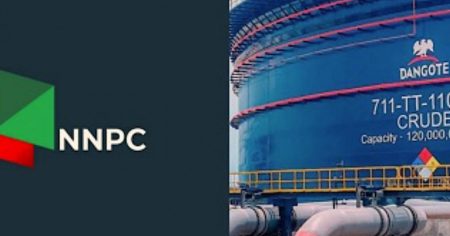The Organization of the Petroleum Exporting Countries (OPEC) experienced a slight decline in oil production during April 2023, despite a planned output increase taking effect. This unexpected dip stemmed primarily from reduced supply from Venezuela, a consequence of renewed efforts by the United States to curtail Venezuelan oil flows. Additional, albeit smaller, production decreases in Iraq and Libya also contributed to the overall decline. The Reuters survey, which tracked OPEC’s production, indicated an output of 26.60 million barrels per day (bpd) in April, a decrease of 30,000 bpd from March’s figures. This reduction occurred despite the broader OPEC+ alliance, which includes OPEC members and allies like Russia, initiating a phased unwinding of previously implemented production cuts.
The seemingly contradictory decrease in production amidst a planned increase underscores the complexities of the global oil market and the influence of geopolitical factors. While OPEC+ had intended to boost output based on perceived favorable market conditions, such as low inventories, the actual production levels were impacted by external forces, particularly the US sanctions targeting Venezuelan oil exports. These sanctions disrupted shipments and forced tankers destined for the US to reroute, effectively reducing Venezuela’s overall output. Simultaneously, Iraq, facing pressure to adhere to OPEC+ production quotas, also curtailed its output, further contributing to the overall decline in OPEC production.
The dynamics within OPEC+ also played a role in the April production figures. Major producers like Saudi Arabia, the United Arab Emirates, and Kuwait maintained relatively stable output levels despite the higher quotas allocated to them under the OPEC+ agreement. This suggests a cautious approach by these key players, possibly reflecting an awareness of market uncertainties and the potential impact of geopolitical developments. The survey highlighted a divergence between different data sources regarding the compliance of certain OPEC members with their assigned quotas. While the Reuters survey and OPEC’s secondary sources suggested that countries like the UAE and Iraq were operating near their quota levels, other estimates, notably those from the International Energy Agency (IEA), indicated potentially higher production levels. These discrepancies underscore the challenges in accurately assessing real-time production and compliance within the complex oil market.
Meanwhile, Iran, defying US sanctions, increased its oil exports and production in April, representing the largest output hike among OPEC members. This demonstrates Iran’s determination to maintain its oil revenue stream despite the ongoing pressure from the US. The effectiveness of US sanctions in curbing Iranian oil supply remains a point of contention, with some data suggesting limited impact on actual production levels. The interplay between US sanctions, OPEC+ production policies, and individual member countries’ strategies contributes to the volatile nature of the oil market. The April production figures highlight the ongoing struggle between supply and demand forces, geopolitical pressures, and the efforts of OPEC+ to manage market stability.
The planned acceleration of production hikes by OPEC+ in May and June adds another layer of complexity to the outlook for the oil market. The ultimate impact of these increases will depend on a number of factors, including the effectiveness of US sanctions on Iran and Venezuela, the overall global demand for oil, and the evolving geopolitical landscape. The April production dip serves as a reminder that despite the intended production increases, unforeseen circumstances and external pressures can significantly influence actual output levels. The success of OPEC+ in achieving its production targets and maintaining market stability will hinge on its ability to navigate these complexities and adapt to evolving market conditions.
In conclusion, the April production figures for OPEC reveal a complex interplay of factors impacting the global oil market. Despite a planned output increase, the organization experienced a slight decline due primarily to disruptions in Venezuelan supply caused by renewed US sanctions, along with production cuts in Iraq and Libya. The actions of key producers like Saudi Arabia, the UAE, and Kuwait, who maintained relatively stable output despite higher quotas, indicate a cautious approach to managing production levels. Meanwhile, Iran’s defiance of US sanctions and its increased output highlight the challenges in controlling global oil supply. The planned further increases in production for May and June by OPEC+ add to the uncertainty surrounding the future direction of the oil market. The success of OPEC+ in achieving its production targets and maintaining market stability will depend on its ability to navigate these intricate dynamics and adapt to evolving geopolitical and market conditions.














